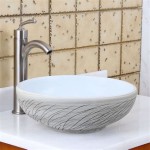Can You Paint Existing Bathroom Tiles?
Updating a bathroom can be a significant undertaking, often involving costly renovations and disruptive demolition. However, for those seeking a more budget-friendly and less intrusive approach, painting existing bathroom tiles presents a viable option. This technique allows homeowners to refresh the look of their bathroom without resorting to a full-scale renovation. However, understanding the intricacies and considerations of tile painting is crucial for achieving a successful and durable outcome.
Understanding Tile Painting
Tile painting involves applying a specialized paint designed to adhere to ceramic, porcelain, and other tile surfaces. The process typically involves cleaning the tiles thoroughly, applying a primer, and then multiple layers of paint. While seemingly straightforward, tile painting requires careful preparation and application to ensure long-lasting results.
Key Points to Consider Before Painting Bathroom Tiles
Before embarking on a tile painting project, it's essential to consider various factors that can influence the success and durability of the outcome. These include:
1. Tile Material and Condition
Different tile materials respond differently to paint. Glazed tiles, with their smooth, non-porous surface, provide a better adhesion base compared to unglazed tiles. The condition of the tiles is equally important. Cracked, chipped, or heavily soiled tiles may require repairs or specialized treatments before painting.
2. Expected Wear and Tear
Bathrooms experience high levels of moisture, humidity, and use, making it essential to select a paint specifically designed for these demanding conditions. Choosing a paint with excellent moisture resistance, durability, and mildew resistance is crucial for preserving the integrity of the painted finish.
3. Desired Aesthetic
Tile painting offers a wide range of aesthetic possibilities. From bold statement colors to subtle, updated tones, the paint color selection should complement the overall bathroom design. It's advisable to consider the existing color scheme, fixtures, and accessories to create a cohesive and visually pleasing result.
Steps Involved in Painting Bathroom Tiles
Successful tile painting requires a structured approach, ensuring proper preparation and application. The following steps outline the process:
1. Preparation
Thorough preparation is paramount for achieving a long-lasting painted finish. This includes cleaning the tiles with a degreaser to remove any soap scum, grime, or residue. It's essential to allow the tiles to dry completely before proceeding.
2. Masking and Protection
To protect surrounding areas from paint splashes, masking tape and drop cloths are indispensable. Masking off fixtures, grout lines, and areas adjacent to the tiles ensures a clean and professional finish.
3. Primer Application
A primer designed for tile surfaces is necessary to create a bonding base for the paint. Applying the primer evenly and allowing it to dry completely before applying the paint is crucial for optimal adhesion.
4. Paint Application
Tile paint should be applied in thin, even coats using a high-quality paintbrush or roller. It's generally recommended to apply two to three coats, allowing each coat to dry thoroughly before applying the next. Using a brush with a slightly angled head can help navigate around corners and grout lines.
5. Grout Application
If the existing grout is discolored or mismatched, it can be painted with specialized grout paint. Applying grout paint with a small brush ensures precise coverage while maintaining a clean finish.
6. Sealing
Once the paint is completely dry, a sealant designed for bathroom surfaces should be applied to protect the finish from moisture, mildew, and wear. Applying the sealant with a brush or roller ensures complete coverage.
Maintenance and Durability
Proper maintenance is key to prolonging the life and aesthetics of painted tiles. Regular cleaning with mild soap and water helps prevent dirt and grime from accumulating. Avoid using harsh chemicals or abrasive cleaners that can damage the painted surface.
The durability of painted tiles is influenced by factors like paint quality, application technique, and surface preparation. However, under normal use and proper maintenance, painted tiles can offer a renewed look and functionality for several years.

How To Paint Over Tile Average But Inspired

How To Paint A Tile Floor Artsy Rule

From Ugly To Wow How Paint Bathroom Shower Tile

Can You Paint Bathroom Tile Yes But It S Complicated Taskrabbit

Refresh Your Bathroom Tile With Grout Paint Arched Manor

Nitpicky 6 Month Painted Tile Update House Mix

Should I Paint That Tile

Painted Tile Before And After Bathroom Makeover Yellow Bathrooms Design

Nitpicky 6 Month Painted Tile Update House Mix

Can You Paint Shower Tile Terry S Plumbing
Related Posts







